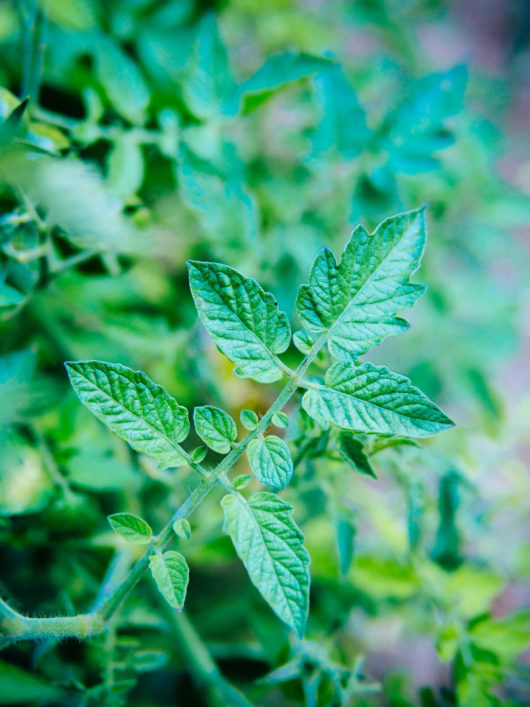
Maybe it was my Asian upbringing that taught me never to waste food, as my family used and ate every part of the vegetable, fish, chicken, pig or cow that we brought home. Or maybe it’s my ever-growing curiosity when it comes to food from the land… but when I walk around the garden, looking at all my lovely plants, I always think, Can I eat that part?
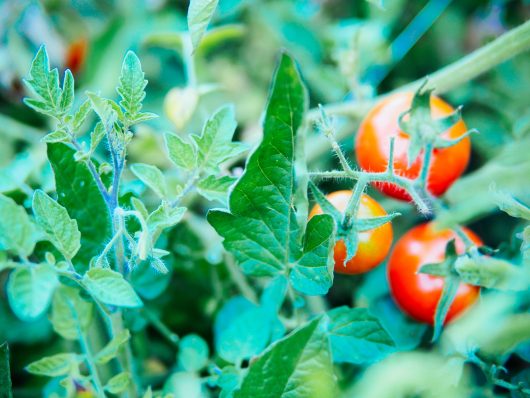
And by “part,” I mean the unconventional parts of the plant that you typically don’t think to eat. This was how I came to love artichoke stems, leek greens, and cucumber leaves, parts that are normally discarded or composted, but are in fact quite tasty.
So one day, when I was walking by my tomato plants, I started wondering whether the leaves were edible or not. With vines that sometimes grow to 10 feet long, it seemed like such a waste that the leaves weren’t used when the amount of fruit seemed so small in proportion. It got me to thinking… Why don’t we eat tomato leaves?
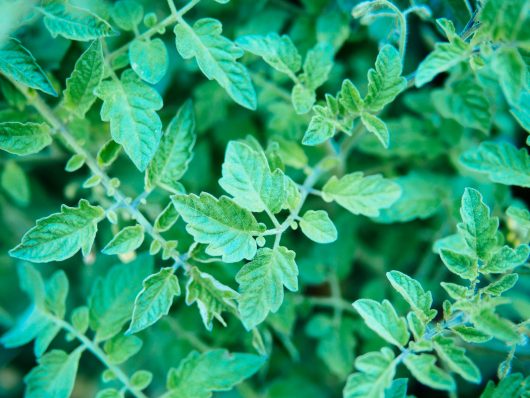
Popular culture has taught us that tomato leaves are part of the “deadly nightshade” family and thus, they must be toxic. But I bet that more than a few people, if asked, would have no idea what that even means. It’s just what’s known. No questions asked — but we need to ask.
What is a nightshade, why are the leaves toxic but not the fruit, and why don’t we see bunches of leaves in the supermarket if they aren’t toxic?
Let’s take a look at all the myths surrounding the Solanaceae family and explore the science that says otherwise.
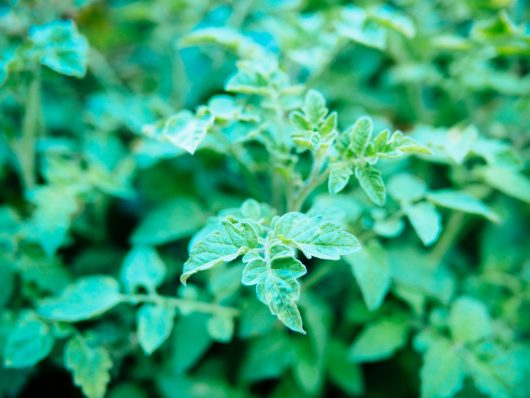
Myth #1: Nightshades are highly poisonous.
When referring to the Solanaceae family of plants, many people call it by its more common moniker, the nightshade family. Within this family are the vegetables we know and love, like tomatoes, tomatillos, potatoes, eggplants, and sweet and hot peppers.
But also within this family is the ominous “deadly nightshade,” also known as belladonna (Atropa belladonna). This herbaceous perennial has historical use in herbal medicine as a pain reliever and muscle relaxer, and even as a beauty aid.
In fact, the name “bella donna” means beautiful lady in Italian. It comes from the outdated practice of women putting drops of belladonna berry juice in their eyes to dilate their pupils; the look was considered attractive in the day.
But rest assured that though tomatoes are distantly related to belladonna, they do not contain the chemical compounds that make belladonna (especially its berries) so poisonous.
The tomato (Solanum lycopersicum) does have an interesting history however, as its scientific name, lycopersicum, is Latin for “wolf peach” and derives from German folklore. When the tomato was brought to Europe in the 16th century, people believed it to be poisonous like other members of the Solanaceae family, including belladonna, henbane and mandrake.
Legend had it that witches used these hallucinogenic plants in potions to conjure werewolves. Since the tomato’s fruit looked so similar to that of belladonna, it was dubbed the wolf peach.
These days, we know that while tomatoes belong to the (very large and diverse) nightshade family, they definitely aren’t of the deadly nightshade variety.
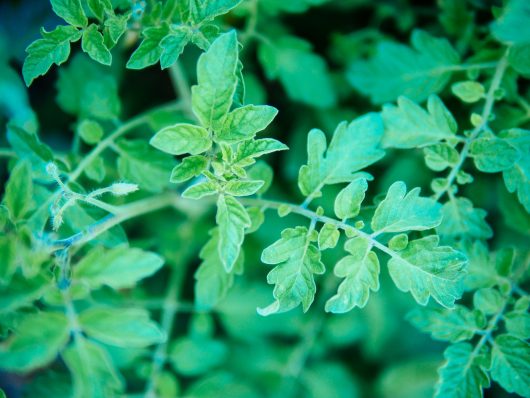
Myth #2: Tomato leaves contain toxic compounds called alkaloids.
As mentioned in my previous post on carrot tops, all vegetables contain alkaloids. Alkaloids are part of a plant’s defense mechanisms (existing in all parts of the plant to protect against certain animals, insects, fungi, viruses, and bacteria) and we consume them on a daily basis in various amounts.
That locally-grown heirloom bean and kale salad you had for lunch? Alkaloids. Those antioxidant-rich organic green smoothies you make every week? Major alkaloids.
While it’s true that some alkaloids are not good for you (like nicotine and cocaine), others can be good or bad, depending on your view (like theobromine, the stimulant found in chocolate, or caffeine, that Monday-morning life-giver). Even though alkaloids are present in your everyday veggies, you could never eat enough of them in one sitting for the alkaloids to be harmful.
The major glycoalkaloid in the tomato plant is tomatine. (To put it simply, a glycoalkaloid is an alkaloid bonded with a sugar.)
Tomatine exists in all green parts of the plant, including the stems, leaves, and green tomatoes. (For the sake of clarity, whenever I mention “green tomatoes” in this post, I’m referring to the immature, unripened green tomatoes — and not the varieties of naturally green tomatoes.)
A study published in the Journal of Agricultural and Food Chemistry found that the highest concentrations of tomatine were found in senescent leaves, followed by the stems, fresh leaves, calyxes, green fruits, and finally, the roots (which had the lowest concentrations).
The difference in concentration between the fresh leaves and green fruits is negligible, so one isn’t necessarily “safer” to consume than the other. While tomatoes do show a decline in tomatine content as they mature and ripen, no one has ever thought twice about devouring a heaping of fried green tomatoes or pickled green tomatoes!
Glycoalkaloids are also poorly absorbed by the gastrointestinal tract of mammals, and will pass through quickly to the urine or feces. In people who are sensitive to these compounds, stomach irritation may occur but they would have to ingest an unrealistic amount of green tomatoes or tomato leaves to experience ill effects.
So what’s the deal? Are tomato leaves poisonous or not? According to this food safety study (which compared the potential toxicity of glycoalkaloids found in tomatoes, potatoes, and eggplants), tomatine is a relatively benign glycoalkaloid. It resulted in no significant changes to liver weight or body weight when fed to mice, and is not considered adverse to human health.
What’s most surprising is the discovery of tomatine as a cancer inhibitor. The glycoalkaloid has been found to effectively kill or suppress the growth of human breast, colon, liver, and stomach cancer cells. This study suggests that consumers could benefit from eating high-tomatine green tomatoes, and that there may be a “need” to develop high-tomatine red tomatoes as well (for the treatment of cancer and/or the study of tomatine as an anti-carcinogenic and anti-viral agent).
Judging from these studies, and the lack of evidence that tomato leaves are toxic in any way, I’ll have to give Myth #2 a miss.
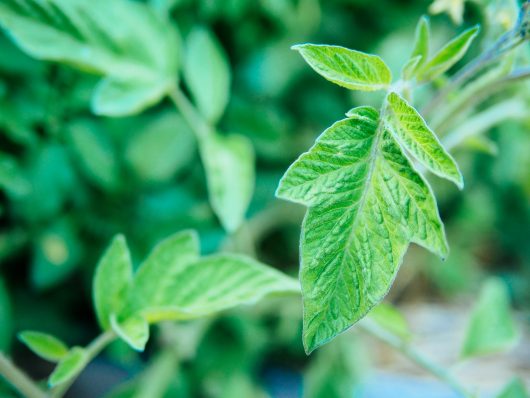
Myth #3: Organic gardeners make tomato-leaf sprays to kill pests, so that must mean tomato leaves can kill us too.
Tomato-leaf sprays are made by chopping and soaking tomato leaves in water, then using the sprays on various plants to control aphids. Since tomatine, a glycoalkaloid, has fungicidal properties and is part of the tomato’s natural defenses, it makes sense that the compound could potentially protect against pests when extracted into a solution.
But theoretically, you could make a spray with any green part of the plant, like the stem (which contains even higher amounts of tomatine). Unless you’re allergic to tomatoes, the tomatine in tomato-leaf sprays won’t harm you — and that’s why it’s used as an organic method of pest control.
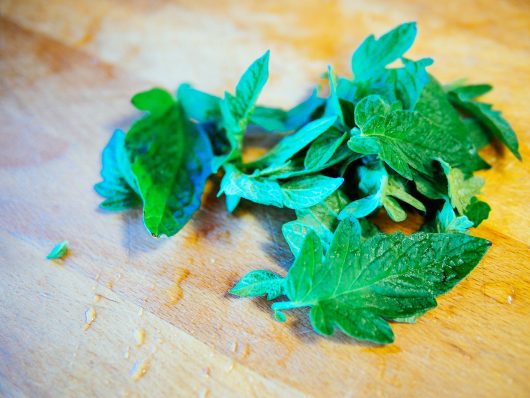
Myth #4: Tomato leaves aren’t sold commercially and no one has ever cooked with them, so that’s a sign they’re not meant to be eaten.
True, if you tried to Google recipes for tomato leaves, you aren’t likely to find any. Former Chez Panisse chef Paul Bertolli was known to infuse his tomato sauces with tomato leaves, but aside from that, not many people have stepped up and ‘fessed up to their culinary use.
(Side note: My first book, The CSA Cookbook, explored a myriad of ways to use the unconventional parts of plants that you may have never known were edible, including tomato leaves. Fellow blogger Lisa reviewed my book when it was released and shared my recipe for Tomato Leaf Pesto on her blog.)
But — and a big but — that does not mean they aren’t edible. Until I started cooking from my garden, I never knew all the possibilities of the plants I was growing.
An adventurous appetite has led me to discover how delicious broccoli greens are (you won’t find many recipes for those either), as well as carrot tops, nasturtium pods, radish pods, radish greens, and pea shoots (which are actually an Asian grocery staple). The fact that tomato leaves aren’t part of the mainstream American diet doesn’t make them toxic by any means. People just don’t know what to do with them… yet. (Hopefully this will change in my generation.)
You know what is toxic though? The amount of food we waste in this country, and how Americans lead the world in food waste.
This post updated from an article that originally appeared on August 20, 2013.
The post Tomato Leaves: The Toxic Myth appeared first on Garden Betty.

Check Out My Books!
 |
The New Camp Cookbook offers over 100 modern recipes for campers, road trippers, and adventurers, plus practical tips for building a cooking fire, setting up a camp kitchen, and stocking an outdoor pantry. As seen in Time Magazine, Outside Magazine, and Food & Wine! |
 |
The CSA Cookbook features over 100 no-waste recipes for using up the produce in your Community Supported Agriculture box, farmers' market basket, or backyard bounty. Learn how to cook all the unconventional parts of vegetables you thought you couldn't eat, like carrot greens and squash leaves! |
|
from Garden Betty https://ift.tt/2Mflg1H




















